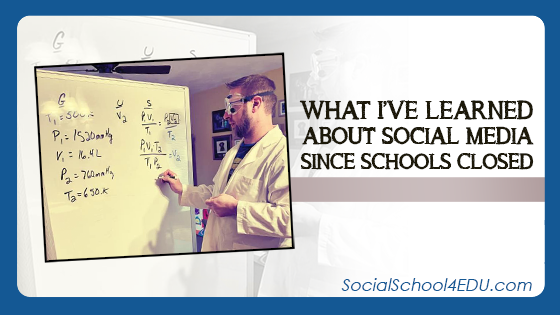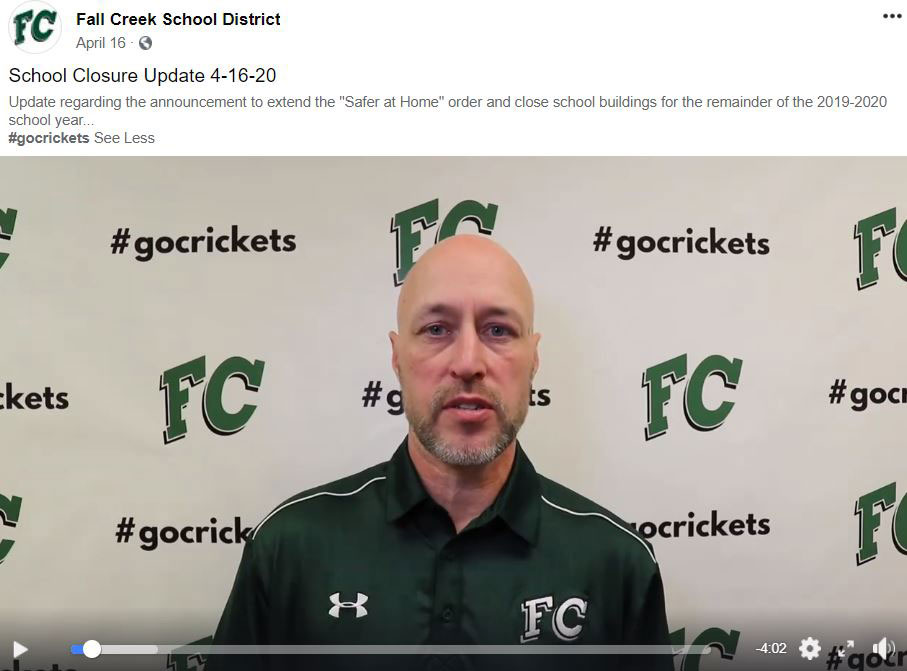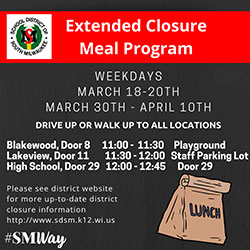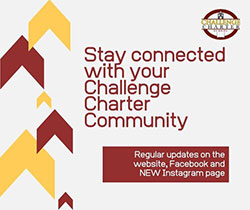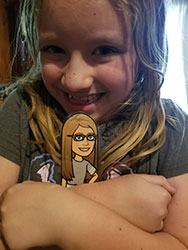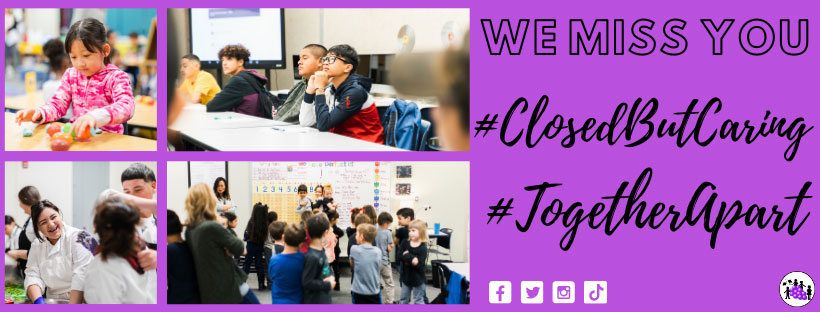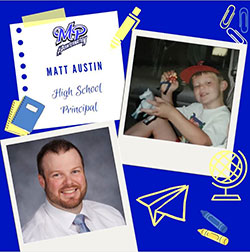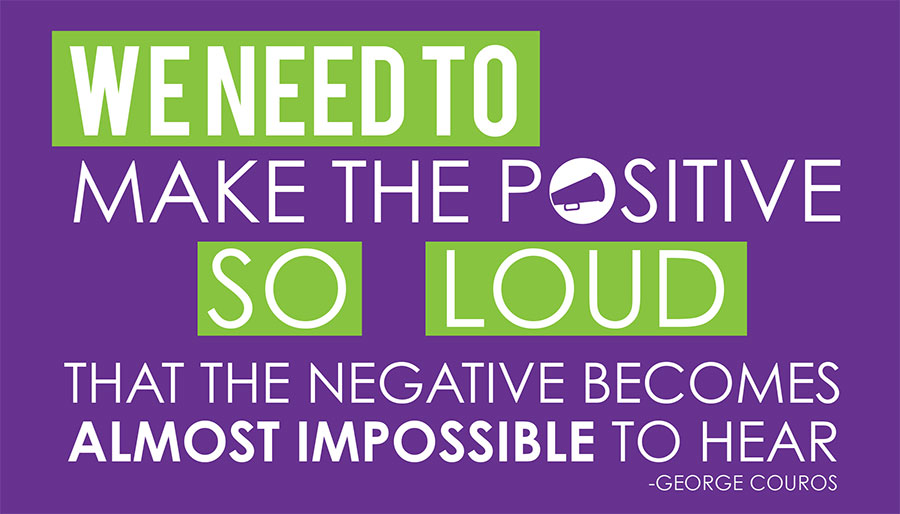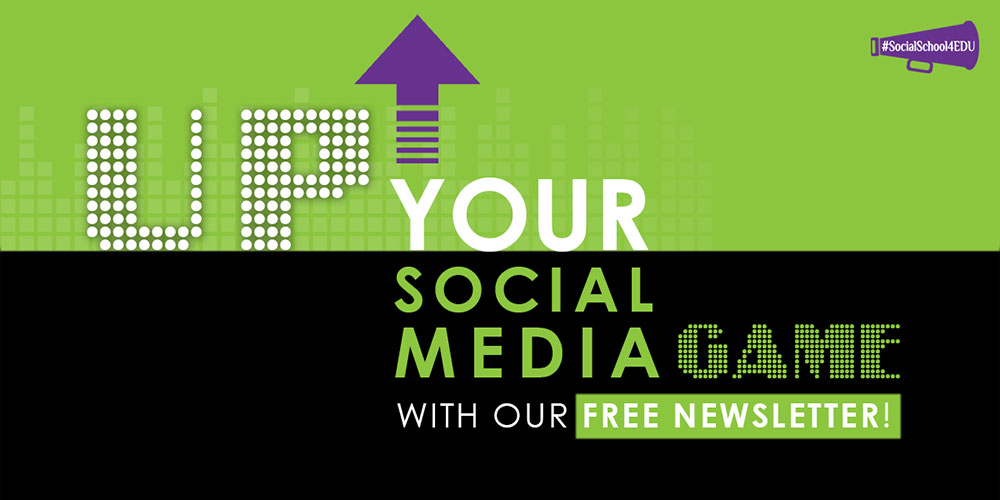Andrea – I know that our school needs social media, but I don’t know where to start and I don’t have time to figure it out. Do you think you could help?”
On February 3, 2014, Brian Henning, Superintendent in New Auburn, Wisconsin, sent me an email. I had just launched my social media business after a corporate layoff and my mom happened to be his assistant. I really didn’t know much about social media for schools, but I was willing to jump in and learn.
My efforts were tremendously well-received by the little community of just over 500 residents. Other schools started to take note, and my business started to grow. After six years in business, my team now helps celebrate more than 100,000 students across the country with posts on Facebook, Instagram, Twitter, and YouTube.
I had learned so much about the power of celebrating students and staff with social media. Providing daily updates of the amazing things happening in and out of the classroom was powerful. It was making a difference.
And then COVID-19 and school closures happened…
What would this mean for our school clients? What would it mean for every school across the country?
Well, that’s why you’re reading this. I have learned a lot since schools closed. And chances are, you have, too.
Today, I wanted to reflect a bit on what I’ve learned. I also asked other school communicators to weigh in, too. My hope is that this reflection may help you, your school, and your community.
Schools with a strong social media presence were at an advantage.
It’s 2020. I hope your school is using social media! It enables you to meet people where they are at – on their phones. Schools with a consistent social media presence and system of communicating information were at an advantage when the school closures hit.
Lauren Shissler, School Account Manager with #SocialSchool4EDU, shared:
“Our school partners, who had a strong social media presence already, were positioned to communicate well with their followers. I noticed that Richland School District (Wisconsin) added more than 200 hundred followers at the start of the school closure because they did such a good job sharing information – and people were used to getting great updates from the social channels. Many of our superintendents also jumped into using Facebook Live to communicate important updates. They were already comfortable using this platform, so it made it easier to do in the face of this challenging situation.”
This is one of the videos by Superintendent Joe Sanfelippo in Fall Creek, WI. It reached over 4,400 people even though the school only has about 700 students. That’s the power of social media! One of his community members shared his video with this note:
“I’m not crying, you’re crying. So glad this is the man leading our school through this time – we couldn’t be in better hands. Thank you Joe Sanfelippo for everything you are doing and facilitating during this time, your shoulders must be tired with the load you are carrying. This makes my heartache for my kiddos not finishing their year with their teachers they love so dearly, but we will make it through. How lucky are we to have something so special to miss.”
This is powerful feedback. Parents and community members supported the school throughout the crisis. Everyone needed to hear this, especially the educational leaders and teachers. While everyone was trying to make sense of what was happening in the world, schools with strong social platforms were able to be the calm in the eye of the storm.
Another small district that was able to do this was Superior Public Schools in Nebraska. They reach more than 7,000 people each week just on Facebook. This means that they could get the information out to the masses because people already relied upon the channels to stay connected to the school. Sara Fuller from the district stated:
“Our community continued to look to us and our social media for updates as well as a sense of normalcy.”
At first, social media changed from celebration to information.
When school closures were rolling out across the country, it wasn’t the right time to share a post about Axel winning the spelling bee or Mrs. Asher teaching the art students how to paint using watercolors. We all had to shift quickly into using social media for important updates.
Natalie Eiting out of the School District of South Milwaukee in Wisconsin shared:
“Our role never changed but our avenue did. Being the calm in the storm to guide, model, and support. Depending on the community, the school district becomes the hub. Working to feed and provide support and information. Offer a virtual place for the community to “connect” and continue relationships. I don’t think there has been a time since our district began using social media that we have had the opportunity to be the glue to hold our tiny community together.”
Lakota Local Schools is a much bigger district in Ohio. They shared some important insight in reflecting back on school closures and the fine line we all had to walk in getting back to celebration. Betsy Fuller, Director School/Community Relations, explained:
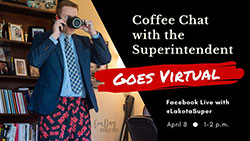
“We use social media regularly to share stories about our students, as well as to update the community about our district. When it became clear that our schools would be closing, we focused on just sharing updates about remote learning and resources to help our families.
The big question was when do we go back to sharing stories of all of the amazing things our students and staff are doing? When is the right time to celebrate our schools again? We used the feedback we were receiving on our posts to take our community’s temperature, so to speak and slowly eased back in. It was the right move to make. Social media is a quick and easy way to share important information, but it’s just as important to balance with the positive, uplifting stories – especially when there is so much negative everywhere right now.
One more thing we’ve done is utilized Facebook live as more than just a way to showcase an event. Our super has jumped on to host his monthly coffee chats virtually, as well as reaching out to our community when the announcement was made to close schools for the remainder of the year. We were able to compile the questions viewers posted into our FAQ to ensure we were touching on what people wanted to know…not just what we thought they wanted to know.”
In the beginning, overwhelm was real. After following the lead of great #SchoolPR leaders across the country, my team at #SocialSchool4EDU recommended how schools should handle the rapid distribution of new information in this helpful blog.
My team has received dozens of confirmations from schools across the country that this was a good approach. Here is one response from Christian Justrabo out of Jefferson Parish Schools in Louisiana:
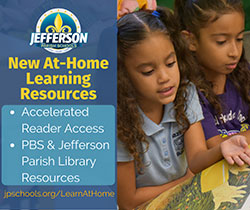 “Having an emergency “hub” on the website to direct people to on social media as a one-stop-shop for everything going on in our situation. A lot of people message us and comment with questions. Not only does it help the public but it helps me who may be working on a newsletter or providing PD instead of updating the website at a given time. We are a very small unit and tag team different responsibilities. Living in Louisiana if we were to have a hurricane coming (knock on wood) or any other emergency situation leering I would know to plan ahead and think about what pages we may need.”
“Having an emergency “hub” on the website to direct people to on social media as a one-stop-shop for everything going on in our situation. A lot of people message us and comment with questions. Not only does it help the public but it helps me who may be working on a newsletter or providing PD instead of updating the website at a given time. We are a very small unit and tag team different responsibilities. Living in Louisiana if we were to have a hurricane coming (knock on wood) or any other emergency situation leering I would know to plan ahead and think about what pages we may need.”
Kim Messer, Director of Communications from Challenge Charter School in Far Rockaway, New York added:
“To simplify and create one place for important information, I created a Family Resource page that gives updates from our Founder, Principals, links to Remote Learning information and packets to various grade levels, parent and student links, as well as state DOE notices. It also has information on talking as a family about the virus and mental health resources.”
Social media brings people together and is here to stay.
Once schools were out, followers were craving a sense of community! Social media was able to bring people together. My team saw amazing growth and appreciation from followers.
Rebecca Villarreal, APR, Director of Communications at New Braunfels ISD, Texas shared a positive transition that happened in her district:
“Before COVID-19, we only utilized social media for emergency messages and higher-level initiatives. When we closed school, I got permission from my superintendent to utilize it more to feature our teachers and staff as well as share messages from our partners. The increase in engagement has been astronomical! It is fun and challenging, but I feel more secure about our messages reaching the right audiences. I have managed social media for past employers but this is the first time I have been able to post at my discretion in the past 7 years in my current district. With a small staff, we had to shift to creating graphics for all platforms, scheduling posts, converting links, and other checklist items to make it successful. It has been a challenging transition, but definitely worth the time and effort!”
I’m so happy that they have seen the value of social media and I know it will stay in that district!
Chelsea Vongehr, Public Information Officer from the Lodi Unified School District in California, had another positive outcome:
“Since our schools closed, a number of our schools (we have 50) have FINALLY created their own social media pages (mainly Instagram and Facebook). While I think using Blackboard or other mass communication tools is important, the power of social media cannot be overstated. Our schools saw how much easier it was to reach their students and families and interact with them via social media. It’s been awesome for me to see how creative our schools have gotten on social media and how it’s positively impacted our families to be able to engage with their schools directly. There are definitely days where it wears on me but I will always be a strong proponent of meeting people where they are… which tends to be on their phones on social media.”
When you can get your staff to buy into the power of social media, it will make your job as a social media manager so much easier! After all, you have to rely on them to get stories to share. Joelle Doye out of Mineral Point Unified School District in Wisconsin shared:
“People who didn’t care much about social media before (staff, parents, etc) I think are really seeing the value of it now. I’m getting content from people I never have in my six years.”
And the buy-in from staff creates support from your followers. After sharing positive stories, my team has observed some amazing comments from community members, such as this one on a video in Oostburg, WI.
“What a great video! While we’re grateful for the medical profession, police and firemen, EMTs, grocery workers, etc, I am grateful for all the teachers and school administrators who have had to completely change their way of teaching. Kudos to all of them and the parents who are doing it all. And a huge kudos to the students, who are trying to adjust and get by day by day. Much love and respect to all!”
This same district also received this message:
“Love all the communication coming out of this page and our district! Our family appreciates all the staff and administrators who are working so hard at all levels and behind the scenes.”
With feedback like this, social media is definitely here to stay. As we continue to face challenges of what school will look like in the fall of 2020, I hope that you look to social media as a tool to communicate with your community. Celebrate the amazing work that is happening. Together, we really can make a difference!
Did you find this article helpful? Never miss an update by signing up for my free newsletter! Click here.

